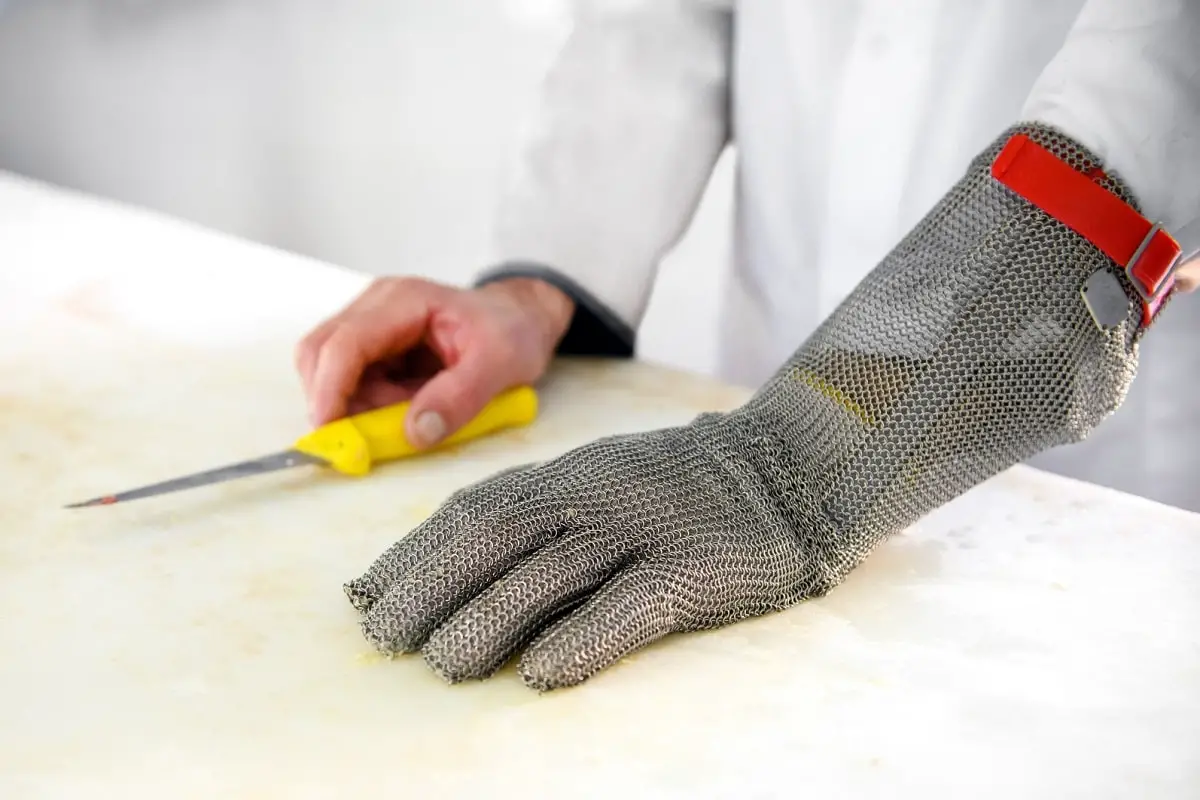Every year, there are new and improved cut-resistant gloves arrive on the market. The cut-resistant gloves of today are stronger, tougher, and have many cutting-edge features than in the past.
Cut Resistant Gloves Are Designed for Certain Tasks
Cut-resistant gloves come in both unique designs and ranked levels of performance. It is normal for most consumers to buy the highest-rated products they can find. This is no different for cut-resistant gloves.
The designs of cut-resistant gloves and their cut-resistance ranking often go hand in hand (no pun). Each glove is made for certain tasks and will withstand cuts and punctures only up to a certain point.
Wearing the right pair of cut-resistant gloves is crucial. For example, heavy leather work gloves may be great for outside gardening or construction work, but not for artisanal crafts or woodworking that requires more dexterity. Wearing these could entire the worker to take them off for more finger movement, but could then put them at risk of injury.
For more information, see our post Cut Resistant Glove Levels.
Length Above the Wrist
Cut resistant gloves can reach above the wrist and up to the lower forearm for added protection. This is especially useful when using large cutting knives or tools that pose a bigger threat to injuring the extremities. Food Grade cut-resistant metal mesh gloves can be purchased that reach higher up the wrist. Most cut resistant gloves, however,

Wrist Straps
Some cut-resistant gloves, especially Food Grade metal mesh gloves include wrist straps to keep the gloves on the hand. They will also keep them covering the separate underlying nylon or cotton gloves. The wrist straps could be lower or higher up the forearm depending on the glove length and intended purpose.
Color Scheme
Cut resistant gloves may be in both dark and bright colors. Common colors include blue, yellow, grey, black, and white. The wrist strap can also be of a different color than the rest of the glove, often blue.
The gloves may have a different color on the back of the hand than on the palm of the hand. This is usually because there are different materials on each side, or there is an extra protective Polyurethane coating on the palm of the hand. This coating will wrap over the tips of the fingers and be visible on the top of the hand and be black, grey, or light grey in color.
The inner layer of the glove may wrap at the wrist edge and be in the color of black as an edging. The wrist area will be free of a protective coating all around and be the same color as the back of the hand.
Seems and Stitching
Most of the visible seems will be on the wrist edge, and when the material changes in the section near the wrist area and on the sides of the fingers. These may be covered by a Polyurethane coating that extends from the palm. Over time, the seem can start to break apart and the glove will need to be repaired or replaced. This cannot be avoided because seems are required to allow for the shaping of the glove.
Cut Resistant Labels And Logos
Some cut-resistant gloves will have labels on the back of the hand that have color-coded markings that show the cut protection level. This is meant to be easily seen at a distance so anyone can spot them across a shop or amongst other gloves. This label can also prevent damage to the back of the glove by acting as another layer of protection.
Cut-resistant gloves may also have a label attached to the end of the wrist with the size, cut-level (ANSI/ISEA, EN/CE), and even the cut-resistant glove standard that it meets (EN388, etc.).
Cut-resistant Gloves Worn Over Other Gloves
Metal mesh cut-resistant gloves are designed to be worn over a pair of cotton, nylon, or polyethylene gloves that usually come included. In fact, if you want additional cut resistance, you can wear a pair of thick leather gloves over another pair of cut-resistant gloves when doing exceptionally hazardous tasks.
Do Aesthetics Matter In Cut Resistant Gloves?
Is there really a big difference between cut resistant glove designs, or is it just more about aesthetics?
Being able to spot cut-resistant gloves from a distance or amongst other gloves is important in a busy workshop. No one wants to buy gloves, only to lose them or misplace them. You also do not want to use the wrong gloves necessarily when you purchased a pair for a specific purpose.
Your cut-resistant gloves with the special color layout and design may be Food Grade and best for cutting meat and vegetables in the kitchen. So, not mixing them up with other gloves, such as work gloves, dishwashing gloves, or gardening gloves is best.
Cut Resistant Glove Safety Is Most Important
Regardless of how your cut-resistant gloves look on the outside, it’s what is in the materials that count when faced with sharp tools and objects that can injure your hands. However, perhaps choosing a pair that has a clear label on the back of the hand can help keep them easily located when you need them.
